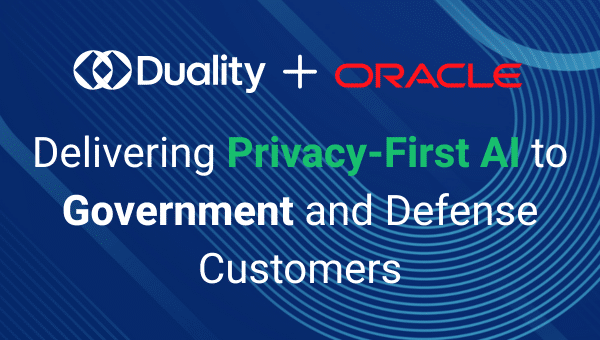The first field that comes to mind when I think about data collaboration is the healthcare industry. Currently, there are many challenges when it comes to data usage between medical centers and even within a single medical institution. Because of regulations on Personal Health Information (PHI), it is extremely difficult to retrieve data to be used in clinical trials, it is harder to identify and develop effective treatments for people with genetic predispositions, and it is challenging to determine the effectiveness of treatment regimens across hospital systems. We must increase awareness in both industry and across regulatory bodies of the existence of technologies that propose a solution to these issues by protecting data during collaboration.
What type of collaboration could occur within the healthcare industry if privacy was not a concern?
There are many areas within which data collaboration in healthcare would be greatly beneficial. For example, within a hospital, there isn’t enough cross-departmental data analysis. With more analysis between departments, hospitals could collaborate to more fully understand medical comorbidities. Also, genomic data could be combined more easily with patient disease registries to have a fuller understanding of genetic predispositions. Finally, real-world evidence collection could be facilitated and clinical trials could be more easily combined with electronic health records to drive more accurate real-world evidence.
How could Duality facilitate these tasks while ensuring data is kept private?
In a perfect world, all of these collaborations would be possible, but as we’ve seen, privacy preservation is important in every corner of the healthcare industry. This is where Duality comes in. Our technology gives organizations the ability to protect the data that needs to remain private while it is analyzed in conjunction with other private data. We can compute on encrypted data and get results as if we had done an analysis of the raw data itself. The data is never revealed, and the analysis is only revealed to certain parties.
A rare disease is defined as a disease that affects less than 10% of the population. In the US, this is 36 million people – this in actuality is a very large group (almost equivalent to the entire population of Canada). The difficulty with rare disease often is that there is not enough research done because the economic return is difficult to be realized. The second big issue is that the data that does exist lives across numerous medical institutions that all have to contend with the regulatory and privacy concerns mentioned above. If these organizations could interact with this data he quality of care for people with rare diseases would increase dramatically, more effective treatments would be developed and maybe… “rare” diseases might not be so rare anymore.
For the full interview with Michael Hughes on healthcare and AI, watch below.

















